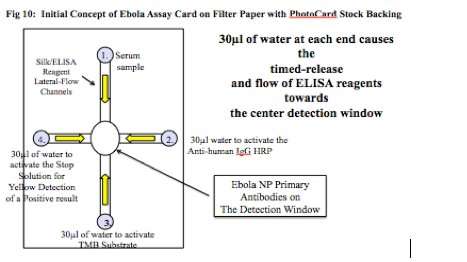
A 16-year-old girl from the U.S. has won the 2015 Google Science Fair with her project which outlines how to develop a cheap, economic, and quick test for the Ebola virus.
Olivia Hallisey says the test will give easy-to-read results in less than 30 minutes, and can also be used to test people to HIV.

BYPASS THE CENSORS
Sign up to get unfiltered news delivered straight to your inbox.
You can unsubscribe any time. By subscribing you agree to our Terms of Use
Latest Video
Msn.com reports:
According to her project description:
Current Ebola detection methods are complex, expensive, require unbroken refrigeration from manufacture to use and up to 12 hours from testing to confirmed diagnosis … The [test] provides rapid, inexpensive, accurate detection of Ebola viral antigens based on color change within 30 minutes in individuals prior to their becoming symptomatic and infectious.
The problem with many current Ebola tests are many, Hallisey wrote in her science fair description:
Current methods of Ebola detection utilize enzyme-linked immunosorbent assay (“ELISA”) detection kits which cost approximately $1.00 each, require complex instrumentation, trained medical professionals to administer, and up to 12 hours from testing to diagnosis.
While Hallisey wasn’t able to test her invention on real Ebola patients or virus, she showed it could detect a protein from the virus.
The test uses the typical components of an Ebola test, which is made up of antibodies (the tags that our immune system uses to mark viruses and bacteria as invaders) and chemicals that cause the test to change colors if these antibodies bind to Ebola proteins in the sample.
The big innovation: To make the test stable, Hallisey used silk fibers to stabilize the chemicals on card stock, allowing them to sit around at room temperature for up to 3 weeks and still be effective. No refrigeration required, unlike with current Ebola tests.
Hallisey then used these silk-stabilized chemicals to design a paper-based test that requires only a serum sample (the clear part of the blood after the red blood cells have been removed) and water to run.

The three chemicals used to detect the Ebola protein-bound antibodies are added to separate corners of the paper (2,3,4 in the diagram to the right). And the anti-Ebola antibodies are in the center.
To run the test, the serum sample is added to the open corner (1).
Then, one by one, water is added to the chemicals, so they flow down to the center of the test paper, kind of like how a paper towel wicks up liquid even when only the corner of it is dipped in water.
The chemicals, serum sample, and water then combine in the right order and timing to give a positive or negative readout for the presence of Ebola proteins.
In the time-lapse gif below, you can see the addition of the water at specific intervals, and how the chemicals come together to create a positive yellow reading:
The early detection of virus infection is critical for patients, since the faster you start to treat someone the more likely they are to survive. Having a test that is simple and can be stored a room temperature would be a game changer.
Hallisey, who is currently entering her junior year at Greenwich High School in Connecticut, says her test could also be adapted to detect HIV, Dengue and Yellow fever viruses, Lyme disease, and even certain cancers.


